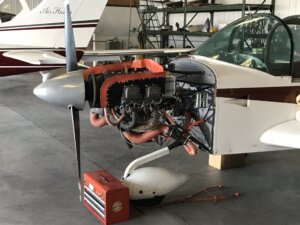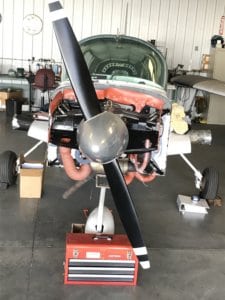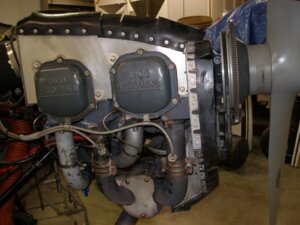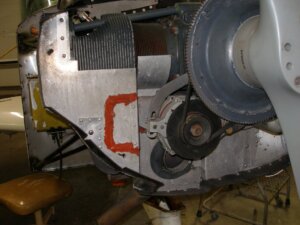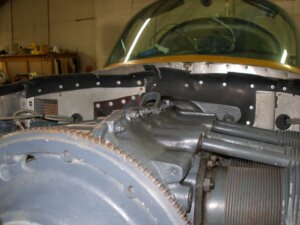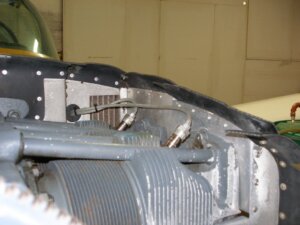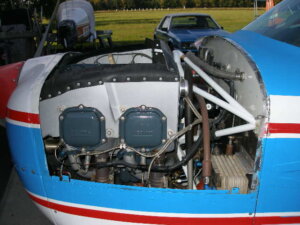February, 2017, Volume XV
Passion
As members we all know the passion and love we feel for our special birds. One member also has the same feeling for college football. He was truly bummed when he had to drive down to a game in Florida (he lives in South Caroline) while his plane was in the avionics shop. Just goes to show we can have many loves in life.
National Gathering
June is rapidly approaching and we are gearing up for our double event. June 9-11 will be our third ‘Wrench and Elbow Bending’ followed by the fourth national gathering. Start making your plans, we have some fund stuff in store and will be in the next newsletter.
Key West Flight School
We had a new GPA member join last month who has a new mission. He plans on starting a flight school down in Key West, Florida and with his passion for Grummans, maybe they will be in the line. Stay tuned.
VIDEOS
We now have a custom YouTube URL, youtube.com/c/GrummanPilots. As of this writing, we have 84 videos on various aspects of our planes. There are more being planned now. As, always your comments and suggestion are welcome.
We just made a pre-flight by the book, in this case the airframe manual, and we are working on a beyond the book that will help catch issues prior to them being an issue.
You can contribute your raw video to us and we will brand it and put it on the channel as long as it is something new. Don’t want a thousand cat videos!
Be sure and send in your suggestions as to topics, and any videos that you might have using your Grumman.
You may have noticed that commercials play at the beginning and this is generating revenue for the GPA. We never want to have dues or paid employees.
New Tools
Working as we type on making the DE-5005-502 elevator tool (this will be only for the AA1C) as well a track-sizing tool. Coming soon.
Also we are making 15 more aileron bullets and 15 more bearing sizing tools so holler if you want one, first come, first served.
Be sure and send in your suggestions as to topics, and any videos that you might have using your Grumman.
Membership
We are up to 960 members in 21 countries. Keep spreading the word.
Members Helping Members
The mission of the GPA is to create a community. Within this community we provide information about our planes, help, and sometimes even very special support.
We have a member who has fallen on troubled times, and when a offending cylinder grounded his plane, it was taken to a cylinder shop that ground the valve seat down too far. This meant that none of the 4 possible pushrods would give him the dry tappet clearance required, thus his intake valve would never fully close.
Another member several states away heard about this and send one of his used 800- hour but serviceable cylinder to me to install on the member’s plane. The sender did not want any money for that cylinder and so the receiver’s plane is now back in the air running smooth on 4 cylinders.
Now all that being said, please do not bury me under requests for free parts, etc.!
This is perfect for Valentine’s Day. The US Post Office is issuing a skywriting postage Forever stamp. Inspired by Skytypers (they use Grumman Tigers), it is coming soon to a Post Office near you!
Digital Downloads
Coming soon to the ‘Store’ will be digital downloads. Just continuing to provide info and products in a timely fashion.
Coming Soon
Dan Baisley has created a cnc file for a 3-d printer and donated it to the GPA. This file will be used to remake the step plugs that many of us are missing. We are also putting this file in the public domain. Thank You Dan!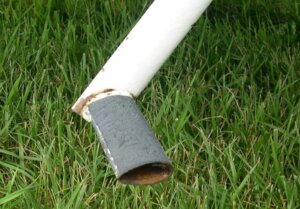
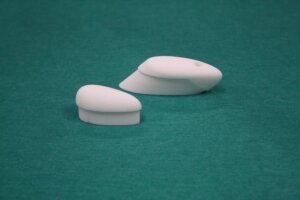

Engine cooling is a “BAFFLING THING”
One of the most asked questions posed to me (and anyone else who will listen in many cases) is; “How can I keep my engine temps down to reasonable or even cool”? Well, there can be many causes but the most common is just plain lousy engine baffles and seals. I am shocked at how many professionals don’t have a clue how important keeping that air tight around the engine and properly exhausted out the bottom is to engine health. Through a few photos, and some verbal picture painting, I will try to answer that so often asked question.
First, let’s assume there is really no serious engine problem that can be causing high temps. Those possibilities are subject for other articles. Let me restate one of my favorite sayings; “Flying around in your air cooled sports car with gaps and rips in your baffle seals, tired old seals that do not even get near the cowling, and with improperly fitting metal parts, broken and cracked, ugly patches pop-riveted on, and (well you know what it looks like) leaking everywhere is the same as driving your prize 4 wheeler around with the radiator half full of coolant with leaky hoses and a loose radiator cap. IT’S GOING TO BURN IT UP!
So you decide to fix the problem, you or your mechanic try straightening up bent baffles, patch cracks, screw, rivet, or wire the stuff together and to he engine, then you order a roll of the crap sold for baffle seal material by the discount house of your choice. STOP RIGHT THERE! DON’T BE THAT STUPID! YOU WANT TO SAVE MONEY. IT’S NOT GOING TO MAKE REPLACING CRACKED CYLINDERS ANY CHEAPER IF YOU SAVE A FEW BUCKS ON SEALS AND PROPER BAFFLE MAINTENANCE.
First, let’s look at the metal baffle parts. The lower parts must fit snug around the cylinder fins and the front and back “lower wraps” must be held tight to the shape of the cylinder fins. The original design of our baffles used springs pulling these together to the inner cylinder baffles between the front and rear jugs. This design was not great s the springs would wear through the aluminum and let loose. Common practice is to safety wire them together, which has to be checked often, and looseness corrected. Some manufacturers used steel angle tabs and threaded rod to secure them, which is a better design and can be retrofitted on our planes. The metal needs to close out as much of the gaps as possible between the cylinders and case to force the downward push of air through the fins rather than past them.
The top seals must seal as tightly as possible to the upper cowling and around the engine. The aft baffle seals must curl forward and the sides inward to capture the air and inflate them tight to the cowling. Everywhere there is any irregularity in the cowling, the seal needs to be trimmed to fit tight around it. Overlaps need to have little slits made to keep air from escaping. The areas where the baffles touch the case should be sealed with RTV and gaps filled with it to where you can put a light under the cowl behind the engine, in the dark, and not see light looking in through the nose cowl inlets. Even filling around the ignition wires with RTV helps. The type of seal material is very important. It should be cloth reinforced, hold its form well, and be soft enough to flex so it will press tight to the upper cowl. Too thin and it will flop, too thick, it will flap, and without reinforcement it will tear. The best thickness I have found is 3/32″. I have use the same black “cloth inserted neoprene” material for over 30 years with great results. I buy it in 54″ wide rolls, 35 feet long, and cut it out with metal templates made from flattened out original Grumman seals. Each one is a specific shape and I sell it in complete kits, for each different model airplane, with the appropriate rivets and installation instructions. (Prices range from $69.95 to $99.95)
When we do a baffle job, we remove all the metal from the engine and make repairs or fabricate new parts as needed. We clean all corrosion, bead-blast if needed, etch and alodine the parts, then paint them with engine grade enamel that will withstand up to 500 degrees. Duplicolor brand spray cans from O’Reillys or other auto stores is what we use. Choose your color. I, personally, do not use the expensive silicone seal material or any other thing that I described above. Yes, it is only available in black. I happen to like it so there! I also like silver or white on the metal (gold if it suits you) and I like Lycoming Grey engines. (To each his own…) It is very easy to wrap up a grand in a proper baffle seal job but it will save much more than that in engine maintenance and make your temps look very happy.
O, yes, we have to mention how you are monitoring them. I love it when people ask me; “What cylinder should I put the probe(s) on”? My standard answer is; “All of them! Either install CHTs and EGTs on all cylinders, using a decent and accurate monitor, or don’t bother doing any of them. It will only get you in trouble. Having all EGTs and CHTs monitored allows you to see problems before they do damage and to much more efficiently lean out the engine for optimum performance and economy. The experienced pilot (who probably learned without fancy equipment) should be able to closely dial in their engine by “feeling” the thing in their fingertips and seat of their pants. This level of pilot may not need any gauge to tell them when the engine is “happy” but can supplement their skill with good equipment to make the best of both Worlds.
Once this is all done, as described, and you have means to see what is happening, then you can look at other areas to improve a particular problem or just get the whole thing down more if necessary. Each engine installation may have little things that will work to pinpoint certain problems that can be dealt with in an individual basis. Don’t expect the same trick to work on other installations. Some will and some won’t.
The accompanying photos will allow you to see what I am trying to describe and show what to shoot for as well as what NOT to do. Remember what I said about half empty radiators
Ken Blackman
Maintenance Director, GPA




